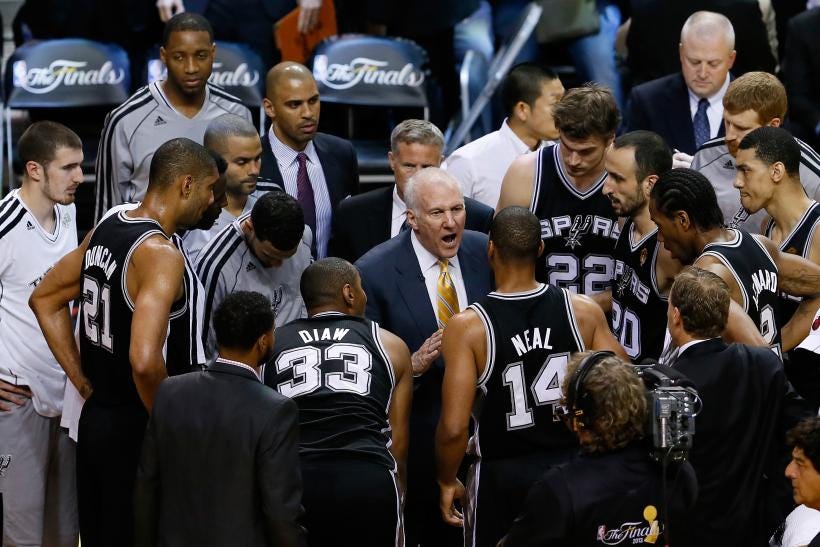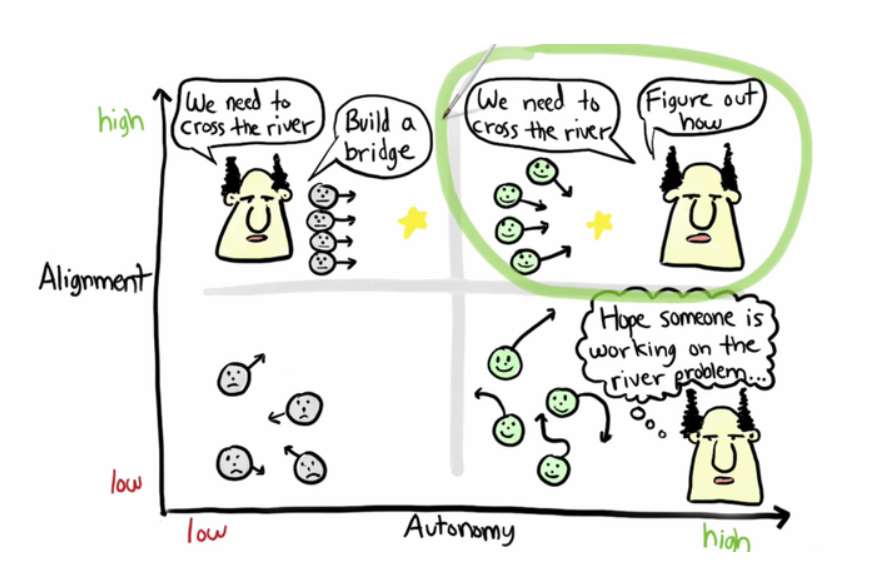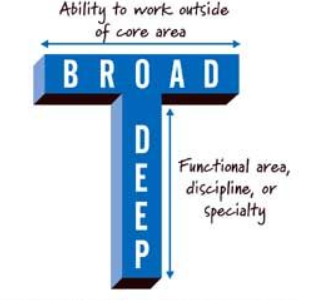Build A Company People Want To Stay With, For Their Entire Careers
If we looked around at each other, and considered that these are the people we’re going to be working with day in and day out for the next 10 to 20 years, would we be doing things differently?
By Evan Tan My previous article explored what it takes to build alignment across a company over the long term. Taking this to the next logical step, I want to explore what it takes to build a team that lasts. Working in a SaaS startup, we spend a lot of time thinking about making good decisions. Good decisions around product, around pricing, our positioning and many other issues. Given a long enough time frame, I have little doubt that we will be able to iron out and figure how to solve these issues. Importantly, I find myself asking if we are spending enough time thinking about ensuring the continuity of the team? I previously shared my view that any person on the team, and anyone that is hired, should be seen as a long term investment for the sustainability of the startup or company. On this basis, if building a startup is a long term endeavour that will likely take more than a decade, then building a lasting high-performing team becomes absolutely critical to develop momentum over time, so as to accumulate the skills, organisational knowledge and internalised team dynamics that last. What does it take to build an institution for the long term? What’s it going to take for us to feel like we can be 100% comfortable with this idea: If we looked around at each other, and considered that these are the people we’re going to be working with day in and day out for the next 10 to 20 years, would we be doing things differently? I was looking around for some examples of building successful teams for the long haul, and found a good resource in a book called “The Culture Code”, that studied successful organisations like the U.S. Navy’s SEAL Team Six, IDEO, Pixar and the San Antonio Spurs. In this article, the book author shared that “When Harvard did a study tracking average culture versus strong culture, strong culture was 782% of net revenue over 10 years.” When employees first join a company, typically most are more than willing to go above and beyond to do a great job, and that dynamism can be quite infectious throughout the team. How then can this enthusiasm, grit and determination, be made sustainable? That energy is exactly what will carry a company forward to new heights through the years. While we can’t control the time it will take to achieve the growth we would like to see for the companies we are in, what we can control is how we work together. A Netflix employee described how among the team, there seemed to be a self-organising principle in play, centred around freedom and responsibility, which he witnessed firsthand when the company handled an outage crisis with total calm: “It felt as if the invisible forces guiding each employee’s behavior were somehow more powerfully aligned, more coherent, than I’d sensed within previous organizations.” Netflix is known for its stringent focus on results and high performance from its team, yet interestingly, a survey of over 10,000 people found the average retention of employees in Netflix is longer than companies like Facebook, Dropbox, Airbnb, Square and Uber. John Ciancutti, an engineer who left Netflix after 13 years, shared that this stems from how “Netflix assumes that you have amazing judgment,” and that “judgment is the solution for almost every ambiguous problem. Not process.” Netflix CEO Reed Hastings shared that he and his co-founder had intended to build an organisation “with no process but no chaos,” achieving this by focusing on “independent decision-making by employees” as its top core value, and “good judgment, not administration” as the operating principle. This is interesting to me given how business team members my startup hired in various countries have had to be exceedingly independent and resourceful, which makes the ability to make good judgment calls even more crucial. Implementing and applying a strong experimental framework would also be a step in this direction, to develop the faculty for better judgment. Interestingly, Hastings also shared that to develop this level of judgment in the team, they had to create a “sense of ownership”, which meant “sharing information across the ranks is essential… everybody gets all the information. What we’re trying to do is build a sense of responsibility in people and empower them to do things.” As a startup developing a data tool that cultivates operational alignment inside organisations, there are strong parallels between a structure for scaling knowledge and teams, with a decentralised principle towards access of information. Working in a startup, the dominant narrative is often one of defying the odds and punching above our weight, especially when it comes to building a great product. To me, the true mark of maturity for a company is when it has successfully built a place that can provide a real future for the people that have chosen to stand by the company. Achieving this takes planning, careful resource allocation and hard choices, but is absolutely essential if we believe that a company is defined by the people we bring in. What will it take for us to be able to give team members the full confidence to say that having chosen to work here, I wouldn’t want to be anywhere else? Sometimes managers might confuse this with the T-shape model for professional development, that outlines the skill paths that an employee can expect to grow in, such as the marketing, sales experience, content, design, analytics, product sense and programming basics that a full-stack business executive can expect to develop as a range of skills utilised for the job. This model is helpful in providing some sense of professional development and a skill tree for employees. However it does not address them wanting to then take that set of skills somewhere else. To risk repetition, there’s a saying here that goes “train people well enough so they can leave, treat them well enough so they don’t want to.” Work is only one facet of our lives. As a team matures, and enters different phases in life, can your company provide for those changing needs? This is core to what will allow for continuity of talent, and establish the foundations of a lasting organisation. Naturally, there will be hits and misses in an ongoing experiment around building a lasting team. However we must insist and hold each other to high-standards, so as to build something great. There was an interesting finding around developing high performing individuals. Psychologists from Stanford, Yale and Columbia discovered that teachers that shared one particular form of feedback boosted student effort and performance so significantly, that they called it “magical feedback”. This simple line goes as follows: These 19 words do not contain any information on how to improve. Yet they are powerful because they deliver a cultural signal: You are part of this group. This group is special; we have high standards here. I believe you can reach those standards. There’s a key insight here that a person’s potential is realised not through their own efforts alone, but through the influence of someone who believes in their ability to reach and actualise their latent abilities. Ultimately, “if you trust and empower people and give them a chance to rise to the higher expectations, the vast majority of people are able to do it.” So let’s all do better together.
Published
24 May 2019
Nurturing High-Performing, Long-Lasting Teams

San Antonio Spurs team with coach Gregg Popovich. (Photo: Kevin C. Cox/Getty Images)Developing Good Judgment

Alignment and good judgement, over process. (Credit: Henrik Kniberg)Setting High Standards

Opportunities to develop broader and deeper skill-sets may not necessarily inspire loyalty. (Credit: Kenneth S. Rubin)
Recent Articles
- Individuation and the Will to Meaning 11 Nov 2024
- Contemplating the Infinite under Finite conditions 2 Jun 2023
- How I Overcame GMAT Critical Reasoning Questions - Reasoning from first premises 29 Oct 2022
- Hello world, from Centroly 25 Jul 2021
- How To Setup A Middleman Blog For Free With GitHub Pages 28 Jun 2020
- Build A Company People Want To Stay With, For Their Entire Careers 24 May 2019
- For SaaS Startup Success, Plan For 10 Years And More 17 Apr 2019
- Present(ing) Futures 1 - The future Singapore economy 4 Apr 2016